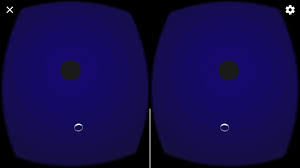The role of the breath in meditation and stress management programs is well established. As a meditation strategy, focusing on the breath is primarily a tool for concentration, a place to focus the mind. As a stress management technique, slowing the breath, “belly breathing,” and focusing on the exhalation are all common (and effective) approaches to shifting the nervous system out of a state of hyperarousal.
In this post, I want to explore the science and practice of RSA breathing, a specific, well-researched strategy that may be the most powerful technique for reducing stress and anxiety that I know. This simple technique quickly changes your heart, your hormones, and your brain.
What is RSA?
RSA stands for Respiratory Sinus Arrhythmia. Despite the very medical-sounding name, RSA is just a technical way of describing a pattern of breathing in which your heart rate and your breath become synchronized. When you are breathing at a specific rate, your heart rate increases as you inhale and decreases as you exhale. Your bodily systems become synchronized, and all sorts of interesting, “magical” things begin to happen.
For example, when you breathe at your RSA rate for 10-15 minutes, stress hormones (cortisol) decrease, and DHEA (restoration) hormones increase (McCraty et al., 1998). Breathing at your RSA rate also quiets down the brain regions involved in the stress response (Sherlin et al., 2010) and maximizes your heart rate variability—a measure of nervous system balance. So, when you breathe at your RSA, you are changing your entire system.
How to do RSA breathing
Learning to breathe at your resonant frequency is often a step-wise process. First, it is important to learn to relax the breathing such that the belly expands and contracts much more than the chest. This type of breathing is often called “belly breathing” or “diaphragmatic breathing.”
The second step is to attend to the quality of the breath, allowing it to become quiet, slow, long, relaxed, gentle, and natural. For many people, these two steps are enough to significantly shift feelings of stress and anxiety as well as change physiological responses associated with anxiety. If you need or want to take it to the next level, then you can begin applying the above breathing practices at a slow and consistent rate (usually around 6 breath cycles per minute), at which point it becomes RSA breathing.
Finding your precise RSA breathing rate is a little bit of an individual process and requires some physiological monitoring equipment, typically a pneumograph (breathing monitor) and something to measure heart rate variability. However, the vast majority of people have their RSA right around 6 breaths per minute. Some people are a little slower, some a little faster, but almost everyone is between 5 and 7 breaths per minute. This is pretty slow, given that the average breathing rate for adults is somewhere between 12 and 15 breaths per minute.
To breathe at 6 breaths per minute, you would complete one breath cycle (inhalation and exhalation) every 10 seconds; 5 seconds in, 5 seconds out. For most people, shifting from 12-15 breaths per minute to 6 is not a terribly smooth transition. Consequently, it is often best to begin lengthening the breath in a comfortable and gradual way, perhaps beginning at 8 breaths per minute and then slowing it down when it feels natural.
RSA and breath pacers
Without a great deal of practice, it is often challenging to breathe at this rate without some form of feedback or method to help you track and pace the speed of your breathing. Fortunately, there are numerous breath pacer tools available, many of which are free through the play store on your smart device. Simply type “breath pacer” into the search bar, and you will have many options.
While each specific breath pacer differs in appearance and settings, they all offer animations and/or sound patterns prompting you to inhale and exhale at a specified rate. You can choose the breathing rate on these programs, in some cases with great specificity, allowing you to choose the length of time for each component of the breath cycle (inhalation, pause, exhalation, pause).
RSA breathing with (or without) a breath pacer can also become a powerful meditation practice tool, providing a visual focus for your breath-focused meditation that simultaneously reduces stress and anxiety. Try doing this practice twice each day for 3-5 minutes each time, and see what you notice!
This post is adapted from the book, Meditation Interventions to Rewire the Brain by Jeff Tarrant.
References
McCraty, R., Barrios-Choplin, B., Rozman, D., Atkinson, M., Watkins, A.D. (1998). The impact of a new emotional self-management program on stress, emotions, heart rate variability, DHEA and cortisol. Integrative Physiological and Behavioral Science. 33(2), 151-170.
Sherlin, L., Muench, F., Wyckoff, S. (2010). Respiratory sinus arrhythmia feedback in a stressed population exposed to a brief stressor demonstrated by quantitative EEG and sLORETA. Applied Psychophysiology and Biofeedback, 35(3), 219-28. doi: 10.1007/s10484-010-9132-z
Tarrant, J. (2017). Meditation interventions to rewire the brain: Integrating Neuroscience Strategies for ADHD, anxiety, depression and PTSD. Eau Claire, WI: PESI Publishing and Media.








No comments:
Post a Comment